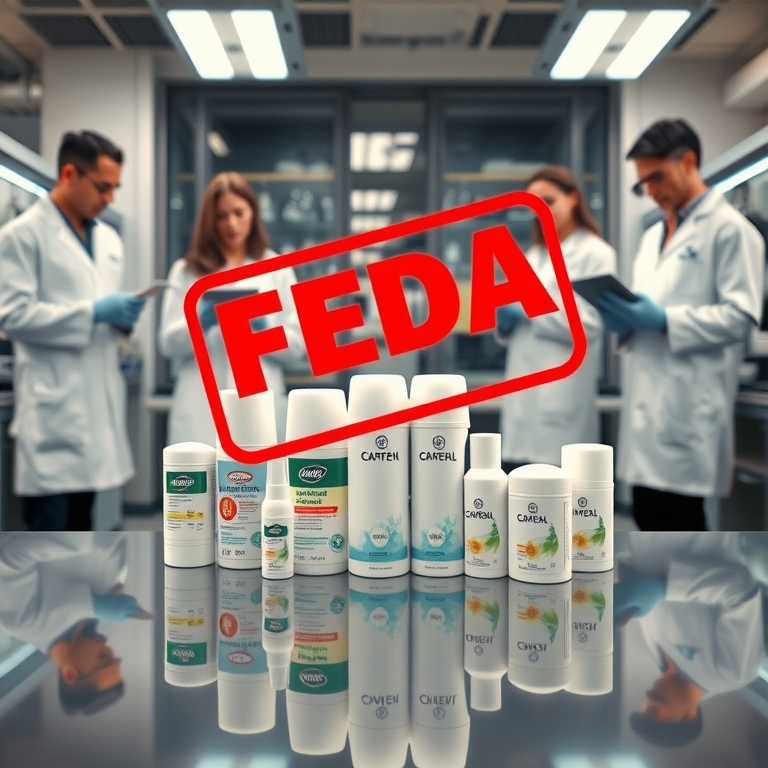In a significant move that has sent ripples through both consumer markets and manufacturing circles, the U.S. Food and Drug Administration (FDA) has issued a recall for a widely-used deodorant brand following the discovery of potential contamination risks. This recall underscores the intricate challenges and responsibilities faced by companies in ensuring product safety and maintaining consumer trust. For the affected brand, the implications are manifold, ranging from immediate logistical hurdles to long-term reputational damage.
The specific details of the contamination have not been fully disclosed, but sources close to the matter suggest that the issue revolves around the presence of a harmful substance in certain batches of the product. Reports indicate that the contaminant could pose health risks to consumers, potentially causing skin irritations and other adverse reactions. As a precautionary measure, the FDA has urged consumers who purchased the deodorant within the specified production dates to cease usage immediately and to return the product to the point of purchase for a full refund.
This development highlights the crucial role of regulatory oversight in the personal care industry, an arena where safety and efficacy are paramount. The FDA’s stringent protocols are designed to protect consumers, but they also reflect the complexity of modern supply chains, which often involve multiple layers of production and distribution. In this case, the contamination may have originated from a supplier or during the manufacturing process, pointing to potential gaps in quality control measures.
For the deodorant brand, the recall is a critical juncture. The company now faces the daunting task of managing the fallout, both operationally and in terms of public relations. Recalls can be costly, not only due to the direct financial impact of lost sales and product returns but also because of the resources needed to address the issue comprehensively. The company must conduct a thorough investigation to identify the root cause of the contamination and implement corrective actions to prevent recurrence. This process may involve revisiting supplier agreements, enhancing testing protocols, and possibly re-evaluating manufacturing practices.
From a reputational standpoint, the brand’s response to this crisis will be scrutinized by consumers, industry peers, and regulatory bodies alike. Transparency and accountability will be crucial in rebuilding trust and reassuring the public. The company has already issued a public statement expressing regret over the situation and a commitment to consumer safety. However, words must be matched by tangible actions to restore confidence. This may include increased communication efforts, such as regular updates on the progress of the recall and the steps being taken to ensure future product safety.
The broader market implications of this recall are also worth considering. In an industry characterized by fierce competition and brand loyalty, even a temporary setback can have lasting effects. Competitors may seize the opportunity to capture market share, highlighting their own safety records and quality assurances. Meanwhile, consumers, increasingly vigilant about product safety, may shift their preferences towards brands perceived as more reliable or transparent.
This incident also serves as a reminder of the challenges faced by the personal care industry in navigating regulatory landscapes. Companies must balance innovation and speed-to-market with stringent adherence to safety standards. The rise of new ingredients and formulations, while appealing to consumers seeking novel solutions, must be carefully vetted to ensure they meet regulatory requirements and do not compromise safety.
Moreover, the recall underscores the importance of crisis management and contingency planning. Companies must be prepared to respond swiftly and effectively to unforeseen challenges, with well-developed strategies for communication, logistics, and consumer engagement. The speed and effectiveness of a company’s response can significantly influence public perception and determine the long-term impact of a recall.
In the wake of this recall, industry analysts and stakeholders will likely engage in broader discussions about improving safety protocols and enhancing regulatory frameworks. This could lead to increased collaboration between manufacturers, suppliers, and regulatory bodies to develop more robust systems for detecting and addressing potential issues before they reach the consumer.
For consumers, the recall serves as a reminder of the importance of vigilance and informed decision-making. While regulatory bodies like the FDA play a critical role in safeguarding public health, consumers also bear responsibility for staying informed about the products they use and reporting any adverse experiences.
As the affected deodorant brand navigates the complexities of this recall, it will undoubtedly serve as a case study for both the company and the industry at large. The lessons learned from this incident will likely inform future strategies and policies aimed at preventing similar situations. Ultimately, the priority remains ensuring that consumer safety is never compromised, and that trust, once shaken, is diligently rebuilt through integrity, transparency, and action.

Leave a Reply